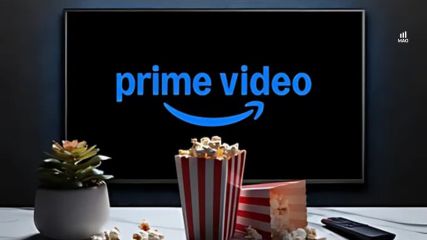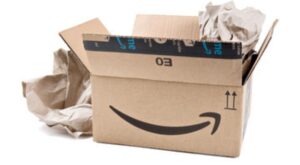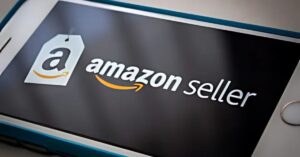
Prime video ads on Amazon DSP add pause and shoppable formats for improved brand performance.
Many Amazon sellers face the ongoing challenge of connecting with potential customers beyond the Amazon marketplace. This can restrict brand expansion and overall sales figures.
However, a significant opportunity has emerged with Prime Video, which reaches over 130 million U.S. viewers each month. Notably, 88% of these viewers have a history of shopping on Amazon.
Recognizing this connection between content consumption and purchasing behavior, Amazon DSP now introduces new ad formats for Prime Video. These include context-aware pause ads and shoppable ads, enabling sellers to reach this engaged audience during relevant viewing moments and facilitate direct product purchases.
New AI-powered and interactive Prime Video Ads on Amazon DSP
Amazon has announced new ways for brands to advertise on its Prime Video service. These new options, powered by artificial intelligence, were presented to advertisers on May 12 in New York City.
These changes aim to make ads more relevant and engaging for people watching Prime Video. Advertisers can now show ads when viewers pause a program, and these ads can relate to what is happening at that moment.
Amazon is also introducing enhanced interactive ads that include up-to-date shopping information.
AI creates relevant ad messages
Artificial intelligence looks at the show being watched and the ad itself. It then automatically writes ad text that fits well with what the viewer is seeing. If someone pauses a show, an ad appears with a message that matches the images on the screen.
Ads show real-time Amazon store details
These ads display current information from Amazon’s online store. This includes things like product information, prices, deals, customer reviews, how many are in stock, and if the item can be shipped with Prime.
This helps customers decide to buy right away using their TV remote, without leaving what they are watching.
More Interactive Options for Brands Not Selling on Amazon
Companies that do not sell on Amazon now have more ways to interact with viewers. They can use location-based messages, options to get leads like “get a quote” or “book an appointment,” and “subscribe now” buttons.
Customers can send this information to their phones to take action later.
Prime Video reaches a large audience, with over 130 million people in the U.S. watching each month with ads. Importantly, 88% of these viewers have bought things on Amazon before. Amazon Ads believes this gives them a unique ability to connect ads to the right people based on their viewing and shopping habits.
According to Alan Moss, who is in charge of global ad sales for Amazon Ads, their ad formats have proven to get people to take action, both on and off Amazon. He said they are starting a new type of ad experience this year that matches the ad message to what people are watching. The aim is to make the ads feel natural and relevant.
In 2024, Amazon Ads first introduced new types of ads for streaming TV that allowed for interaction. They found that brands using these initial ads saw positive results. This included a 30% increase in people remembering the brand, a 28% increase in people wanting to buy, and 36% more orders.
Prime Video Ad innovations align with programmatic advertising market growth
The Business Research Company"The programmatic advertising market size is expected to see exponential growth in the next few years. It will grow to $33.17 billion in 2029 at a compound annual growth rate (CAGR) of 20.6%."
The introduction of new Prime Video ads on Amazon DSP arrives amidst a significant expansion in the programmatic advertising market, as highlighted in a recent GlobeNewswire release. This growth is fueled by increased digital ad spending and the effectiveness of data-driven targeting.
The programmatic advertising market is projected to reach $235.71 billion by 2033, showing a strong compound annual growth rate. This surge is driven by the increasing adoption of automated solutions that improve ad targeting across various digital platforms.
Key factors propelling this growth include advancements in artificial intelligence and machine learning. These technologies enable advertisers to optimize ad placements in real time for better campaign results.
Major players in the programmatic advertising space include companies like Alphabet (Google), Meta (Facebook), and Amazon. These firms offer platforms that allow advertisers to reach specific audiences across different digital environments.
Despite this growth, the programmatic market faces challenges such as transparency and ad placement concerns. Complex supply chains can make it difficult for advertisers to track where their ad spending goes.
Regionally, North America currently holds the largest share of the programmatic advertising market. However, other regions like Germany, China, and the UAE are also showing significant growth in this area.
The programmatic advertising market includes various formats like video and display ads across platforms such as mobile and desktop. This wide range of options demonstrates the extensive application of programmatic solutions for businesses.
Navigating programmatic advertising complexities with Prime Video ads
eMarketer"In 2025, programmatic display ad spending is expected to account for nearly 9 in 10 digital display ad dollars worldwide, making it the dominant way to transact digital ads.."
The introduction of new prime video ad formats on Amazon DSP occurs within a complex programmatic advertising landscape, as noted in a report by MARKETING-INTERACTIVE.
Programmatic advertising has become a central tool in digital marketing, providing a data-first approach to targeting. Yet as new platforms and tools flood the space, advertisers face mounting challenges.
According to Worldwide Business Research 2025, complexity tops the list of concerns. Inventory quality, transparency, and budget fragmentation also complicate campaign execution.
Siloed marketing budgets and differing team metrics worsen inefficiencies across the supply chain. With limited control over ad placements, only 35% of marketers have it; many campaigns suffer in performance.
Sellers new to the space should begin exploring Amazon DSP with experts like an Amazon agency to better navigate these challenges.
Demand for a cleaner supply chain
Advertisers and publishers alike are recognizing the drawbacks of a fragmented ecosystem. The push toward a simplified and transparent supply chain is gaining momentum.
New technologies like AI and first-party data usage are driving cleaner ad operations. These tools help improve targeting while reducing wasted ad spend.
AI’s expanding role in ad efficiency
AI-driven tools are becoming essential for optimizing real-time bids and reducing inefficient ad spend. Their use of behavioral insights and predictive analytics allows marketers to target high-value audiences more precisely.
Real-time reporting enables smarter decisions and improved conversion rates. While concerns about job displacement exist, AI is best seen as a co-pilot, supporting human strategy, not replacing it.
If you’re not yet using AI-enhanced advertising strategies on Amazon DSP, now is the time to consult with experienced agencies.
First-party data as a core driver
First-party data is critical to making AI tools effective. It gives brands direct insights into their customers’ behavior and preferences.
However, many marketers still underestimate its value—three-quarters in APAC say they don’t fully understand the data they own. A similar number don’t even know what first-party data is available to them.
Data in action
When used correctly, first-party data can lead to deeply personalized and cost-efficient campaigns. For example, Blue Insurance in Hong Kong increased conversions by 146% by targeting lookalike audiences on The Trade Desk.
Amazon sellers should take note: leveraging first-party data on Amazon DSP can significantly improve ROAS. Partnering with professionals ensures the best strategy and execution.
Enabling direct advertiser-publisher connections
Platforms like OpenPath are helping to reduce the number of intermediaries in programmatic buying. This improves transparency and bidding efficiency.
By boosting publisher bid volumes and simplifying workflow, these tools maximize advertiser ROI. More budget reaches publishers, making the system fairer for all players.





